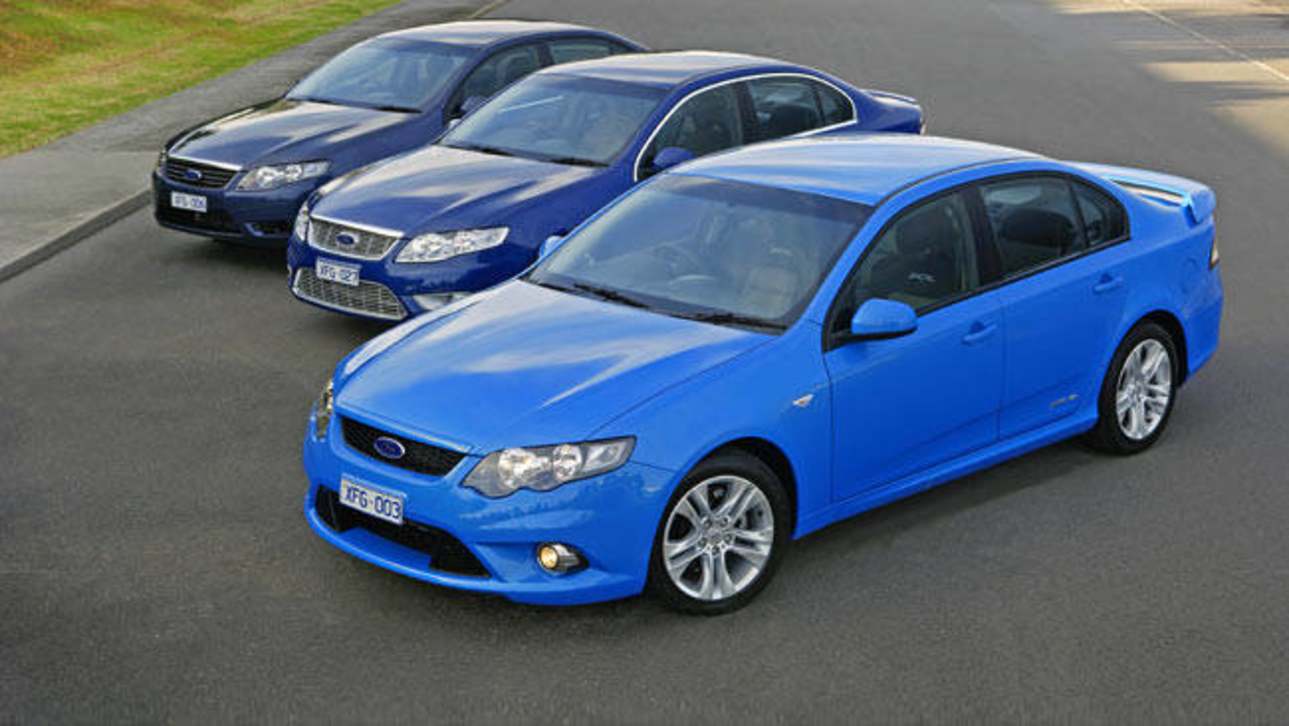But looking at the car you'd be forgiven for confusing it with the old one. The two look very much alike.
Ford says more than 80 per cent of the sheet metal is either new, different or changed.
For all the changes, however, the car still sits on the same platform and is still powered by the same 4.0-litre straight six; so it's really not “all new.”
The new FG Falcon arrives at a time when sales of large cars continue to fall, as buyers opt for smaller, more economical vehicles.
It's one of the main reasons cited by Mitsubishi for the failure of the 380 and its decision to pull the plug on local manufacturing.
Launched 18 months ago, Holden's new VE Commodore is a success, but there's only so much pie to go around.
This must have been uppermost in Ford's mind when it allocated the budget for the FG Falcon program. This, and the lesson it learned with the launch of AU Falcon, whose then radical styling only served to alienate buyers. Not about to make the same mistake twice, it might explain why the new Falcon doesn't look that different?
Meanwhile, the new American V6 which we're told will replace the old workhorse is still a year or more away.
The FG range introduces a new naming structure, with a new sports luxury G Series sedan replacing the Fairmont, along with three different looks and a realignment of models and specifications.
The revised body structure is said to deliver significant improvements in structural integrity for greater occupant protection as well as improved vehicle refinement.
Inside there's more room for the driver's knees and 10mm more legroom in the back.
Ford Australia's new boss Bill Osborne said buyers told the company what they wanted in a new car?
“They've told us again and again that they want everything; they don't want to compromise," he said.
“They want more performance and improved fuel economy. They want more safety features; both passive and active."
“They want more user-friendly technology. And they want it all packaged in a vehicle that visually represents both them and what their car can deliver,” he said.
The new Falcon does not go on sale until May, but Ford decided to preview the car before making its debut at the Melbourne Motor Show in a couple of weeks.
Designers have moved the A and centre B pillars forward and the rear C pillar backwards to create class leading interior space. It also provides easier access to the car, with wider opening doors.
Power from the 4.0-litre straight six is up from 182 to 195kW and torque rises from 380 to 391Nm. The turbocharged six gets 270kW and 533Nm and the 5.4-litre V8, 290kW and 520Nm. Figures for the E-Gas, dedicated LPG engine remain virtually the same at 156kW and 372Nm.
The big news is the adoption of a five-speed automatic and electronic stability control as standard across the range.
Having said that, you get the choice of the six or LPG engine with the entry level XT, with the latter still hooked up to the old four speed auto.
Fuel economy with the five-speed auto drops to 10.5 litres/100km (Commodore's is rated at 10.9 litres/100km)
All petrol sedans come with four airbags, stability and traction control plus anti-lock brakes with electronic brake force distribution and emergency brake assist.
Curtain airbags are optional but fitted to premium models.
A reverse camera system is also offered with premium models.
Standard equipment includes climate air, four-way power driver's seat, four-speaker single CD audio system, a new, larger computer screen, cruise control and 60/40 split fold rear seats.
The all-new FG Ute will go on sale shortly after the sedan.
Prices have not been released.








.jpg)
.jpg)
.jpg)








































.jpg)
.jpg)
.jpg)

.jpg)












Comments